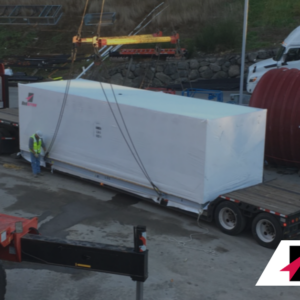For years, supply chains around the world have operated in the JIT (just-in-time) framework. And for those years, it was sufficient because supplies were on a schedule and demand was predictable. However, after the onset of COVID-19, many industries are finding their supply chains are no longer what they were. The virus has exposed just how fragile the modern supply chain is.
There has been a lot of discussion about the disruption to the U.S. industrial supply chain caused by the pandemic. Global trade and investment have suffered greatly in the last few months, with manufacturers struggling to find basic materials to continue to produce. Diverse sourcing and digitization will become central to building more stable supply chains that are necessary as the pandemic still lingers.
JIT
Pre-COVID, the just-in-time method was satisfactory for many industries. A JIT system is a form of inventory management that reduces waste by delivering products and materials when they are needed. The production process begins when a customer places an order and inventory is released as needed. This results in inventory that is at correct levels according to demand. It requires effective management of inventory to minimize waste. Materials are delivered when parts are being made, and partly finished goods are completed when it is time to assemble them into a finished good.
And while millions of companies use the JIT model, it does not fit today’s current environment. When there is a global disruption (such as the COVID-19 pandemic), the JIT model does not allow for any resiliency by companies. With no reserves, many companies experienced a huge deficit in supplies and materials during the initial months of the pandemic when they were many delays and cancellations of orders.
Changing Times
Throughout the U.S., companies have been questioning their supply chain reliance on certain countries. Bob Hormats, former U.S. Undersecretary of State for Economic Growth, Energy, and the Environment states that American companies were already reconsidering certain supplier relationships due to higher production costs in countries such as China and greater use of tariffs by the U.S. government: “And more broadly, some were beginning to question whether they had become too dependent on one of their decades-old supply models–Just in Time (JIT) deliveries of key components and products–that led to less need to keep large amounts of inventories, even in critical items, and a concentration of reliance on China and numerous other countries that had proved to be very efficient and quick suppliers for a multitude of items in the past.” Those that were questioning the JIT methodology before the pandemic certainly now see the need for a change.
JIC
Instead of the JIT framework, many companies are using the just-in-case (JIC) method. A McKinsey survey in May of this year found that 93% of respondents plan to increase their supply chain resilience in future months. JIC attempts to diminish the risk in supply chains for companies that have volatile demand.
Supplier Diversification: Companies have realized the importance of diversifying their supplier base. For some, this will come with additional cost, but one that they must make to update their supply chain.
Warehouse Reconfiguration: The thought is that supply disruptions will be limited with either with more or larger warehouses. Greater warehouse capacity in addition to digital networking separate warehouses will help ensure uninterrupted supply.
Increase Automation in Warehouses: While often viewed as an internal investment with many outsourcing their warehousing to outside parties, many were manual-heavy facilities. The technology was outdated, but some companies are investing in warehouse technology to help the efficiency of the supply chain. Advances such as robots, IoT software, and order-picking technologies will become more common.
These changes point to the need for a restructuring of the traditional supply chain process. Perhaps when more normalcy returns to industries, a hybrid JIT and JIC model will emerge. Or perhaps a brand-new model will take hold based on the challenges that the pandemic has created. Either way, companies will need to find new models to fit the current market. The need to design more efficient and more diverse supply chains has become apparent during this global crisis.
Your Trusted Partner
At Red Arrow Logistics, we provide expertise and white glove customer service with fast-growing, complex, and high-value supply chains. As the next-generation model of logistics companies, we offer tailored transportation and logistics solutions — from single shipments to complex over-dimensional and international orders.
Red Arrow offers the scale and scope of services including air, ocean, and ground transportation to meet the budget and schedule requirements of the largest and smallest companies alike. If we can be of assistance, please email us at info@redarrowlogistics.com or give us a call at 425-747-7914.




